10 Thanksgiving Charcuterie Board Ideas
Thanksgiving is all about gathering around good food, and nothing says “welcome” quite like a stunning charcuterie board. I’ll never forget the year I swapped my usual veggie platter for a festive charcuterie spread—it disappeared in minutes! These 10 thanksgiving charcuterie board ideas combine savory meats, creamy cheeses, seasonal fruits, and crunchy nuts into edible masterpieces.
They’re surprisingly simple to assemble, budget-friendly, and absolutely perfect for keeping hungry guests happy while the turkey roasts. Much like my popular Christmas appetizer board, these thanksgiving boards offer endless creativity. Let’s dive into creating a spread that’ll have everyone asking for your secret!
What Are Thanksgiving Charcuterie Board Ideas?
Ever wondered why we’re suddenly obsessed with arranging cheese and crackers like edible art? Thanksgiving charcuterie boards are essentially elevated snack platters featuring seasonal ingredients that celebrate autumn’s bounty. They’re a genius way to keep guests entertained before the main feast.
I love how they combine traditional charcuterie elements—cured meats, artisan cheeses, olives—with fall touches like cranberries, pecans, and mini pumpkins. As the saying goes, “the way to a man’s heart is through his stomach,” and these boards prove it works for everyone! Trust me, once you create your first thanksgiving board, you’ll wonder how you ever hosted without one.
Why You’ll Love These Thanksgiving Charcuterie Board Ideas
The Ultimate Crowd-Pleaser
There’s something magical about watching guests gravitate toward a beautiful charcuterie board. The variety means everyone finds something they love—from the pickiest eater to the adventurous foodie. These boards work as appetizers, keep people satisfied during cooking delays, and even serve as light meals for those who prefer grazing. The autumn colors of dried apricots, orange cheddar, and ruby-red cranberries create an Instagram-worthy centerpiece that doubles as décor.
Budget-Friendly Entertaining
Restaurant appetizers for a crowd can cost a fortune, but assembling a thanksgiving charcuterie board at home saves serious money. You control the portions and can mix affordable staples like cheddar and crackers with just a few premium items like prosciutto or brie for impact. Shopping sales and buying blocks of cheese to cube yourself cuts costs even more. Plus, you’ll use ingredients you likely already have—nuts from your pantry, honey from the cupboard, and seasonal fruits from your grocery run.
Endless Flavor Combinations
The beauty of these boards lies in their versatility. Sweet meets savory with fig jam next to sharp cheddar. Crunchy pecans contrast creamy goat cheese. Fresh grapes provide juicy bursts between bites of salami. You can customize based on dietary preferences, incorporating gluten-free crackers, vegan cheeses, or vegetarian options. Similar to my popular holiday cookie platter, these boards let you showcase different flavors and textures in one stunning presentation. The best part? There’s no cooking required, making them perfect for stress-free entertaining.
How to Make Thanksgiving Charcuterie Board Ideas
Quick Overview
Creating a thanksgiving charcuterie board is easier than you think—no culinary degree required!
These boards impress through thoughtful arrangement rather than complicated techniques. The key is balancing flavors, colors, and textures while incorporating seasonal elements that scream “autumn.”
Time Breakdown:
- Prep Time: 20-30 minutes
- Assembly Time: 15-20 minutes
- Total Time: 35-50 minutes
- Serves: 8-12 people (adjust quantities for larger gatherings)
Key Ingredients for Thanksgiving Charcuterie Boards
Cheeses (Choose 3-5 Varieties):
- 8 oz sharp cheddar cheese, cubed
- 8 oz creamy brie or camembert wheel
- 6 oz goat cheese log
- 6 oz smoked gouda, sliced
- 4 oz blue cheese crumbles (optional, for adventurous palates)
Cured Meats (Choose 3-4 Types):
- 6 oz prosciutto, thinly sliced
- 6 oz salami, various types
- 4 oz turkey slices (keeps it thanksgiving-themed!)
- 4 oz pepperoni
Crackers and Breads:
- 2 boxes assorted crackers (water crackers, wheat crackers, rosemary crackers)
- 1 sliced baguette or crostini
- Gluten-free crackers (if needed)
Fresh Fruits:
- 1 cup red grapes
- 1 cup green grapes
- 2 fresh pears, sliced
- 1 cup fresh figs or dried apricots
- Fresh cranberries for garnish
- Apple slices (toss in lemon juice to prevent browning)
Nuts:
- 1 cup candied pecans
- 1 cup roasted almonds
- ½ cup walnuts
Spreads and Condiments:
- 4 oz fig jam
- 4 oz honey (serve in small jar with dipper)
- 4 oz whole grain mustard
- 4 oz cranberry sauce or chutney
Pickled Items:
- ½ cup cornichons (small pickles)
- ½ cup olives (mix of green and kalamata)
- Pickled onions
Seasonal Garnishes:
- Fresh rosemary sprigs
- Fresh thyme
- Mini pumpkins or gourds
- Cinnamon sticks
- Dried fall leaves (decorative, food-safe)
Step-by-Step Instructions
Step 1: Choose Your Board or Platter
Select a large wooden cutting board, marble slab, or even a clean baking sheet. I prefer wooden boards for that rustic, farmhouse feel. Make sure it’s at least 18 inches long for a gathering of 8-10 people. For larger crowds, use multiple smaller boards placed throughout your space. Clean and dry your board thoroughly before starting.
Step 2: Place Your Anchor Items First
Start with the largest items—your cheese wheels and small bowls for dips. Position brie or camembert wheels in different areas of the board to create focal points. Place small bowls filled with honey, fig jam, mustard, and cranberry sauce strategically around the board. This creates structure and prevents everything from rolling around later. I like placing three main anchors in a triangle pattern for visual balance.
Step 3: Add the Cheeses
Arrange your cubed cheddar in small piles near the crackers. Slice the gouda and fan it out elegantly. Cut the goat cheese into rounds or leave it as a log with a cheese knife beside it. If using blue cheese, keep it in a separate section since not everyone loves bold flavors. Space different cheeses around the board so guests don’t have to reach across for variety.
Step 4: Fold and Arrange the Meats
This is where artistry comes in! Fold prosciutto into loose ribbons or rosettes. Fold salami slices in half and then in half again to create quarter-circle shapes—arrange them in overlapping rows. Roll turkey slices and stand them on end for height. Pepperoni can be layered in flowing lines. The key is creating dimension and movement. Don’t lay everything flat—play with height and texture.
Step 5: Fill in with Crackers and Bread
Tuck small stacks of crackers into gaps around the board. Fan out crostini slices. I like breaking up cracker sections so different varieties appear throughout the board rather than clustering all crackers in one spot. Place heartier crackers near soft cheeses and delicate crackers near milder options. Leave the cracker boxes nearby for easy refills.
Step 6: Add Fresh and Dried Fruits
Wash and dry all grapes thoroughly, then arrange them in clusters that drape naturally over edges. Slice pears just before serving and tuck them between cheese sections. Scatter dried apricots or fresh figs throughout. Add fresh cranberries in small clusters for pops of seasonal color. The fruit not only tastes amazing with cheese but also adds essential color contrast.
Step 7: Scatter the Nuts
Fill smaller gaps with candied pecans, roasted almonds, and walnuts. Nuts add crunch and fill empty spaces beautifully. I love clustering them near soft cheeses—the texture combination is addictive. Candied pecans especially scream “autumn” and pair wonderfully with sharp cheddar.
Step 8: Add Pickled Items and Olives
Place cornichons and olives in remaining gaps. These tangy, briny elements cut through rich cheeses and fatty meats, cleansing the palate between bites. Use both green olives and kalamata for variety. Pickled onions add a pretty pink hue and zingy flavor.
Step 9: Garnish with Seasonal Touches
Now for the thanksgiving magic! Tuck fresh rosemary and thyme sprigs between items for fragrance and color. Add mini decorative pumpkins or gourds around the board’s base. Place a few cinnamon sticks near the honey for visual appeal. These touches transform a regular charcuterie board into a thanksgiving showstopper.
Step 10: Final Touches and Serving
Step back and look for any bare spots or color imbalances. Fill gaps with more nuts, fruits, or crackers. Add small cheese knives, honey dippers, and serving spoons where needed. Just before guests arrive, let cheeses sit at room temperature for 20-30 minutes—this enhances their flavors significantly. Take a photo for your food blog or Instagram, then watch your masterpiece disappear!
10 Creative Thanksgiving Charcuterie Board Ideas
1. Classic Thanksgiving Board
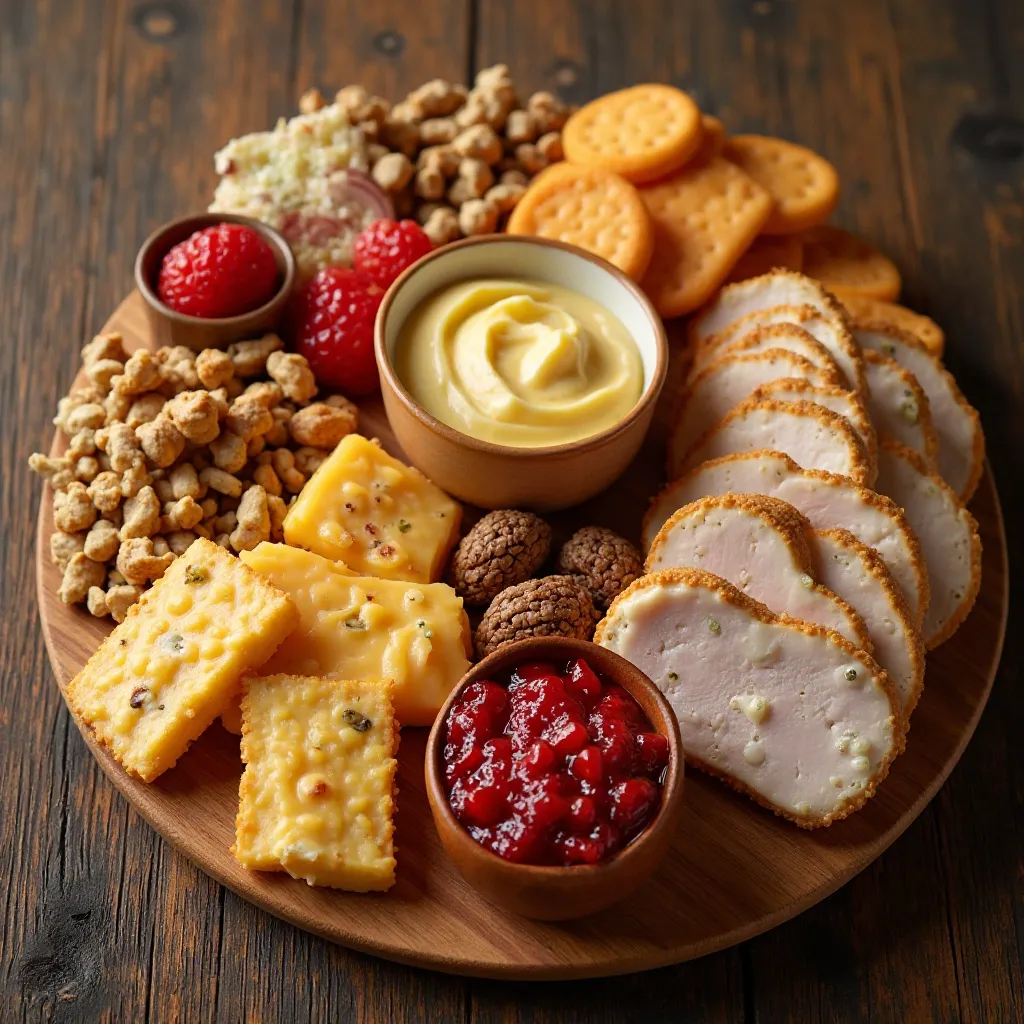
This traditional approach features turkey slices, cranberry sauce, stuffing-flavored crackers, sharp cheddar, and fall fruits. Add candied pecans and honey for sweetness.
2. Harvest Abundance Board
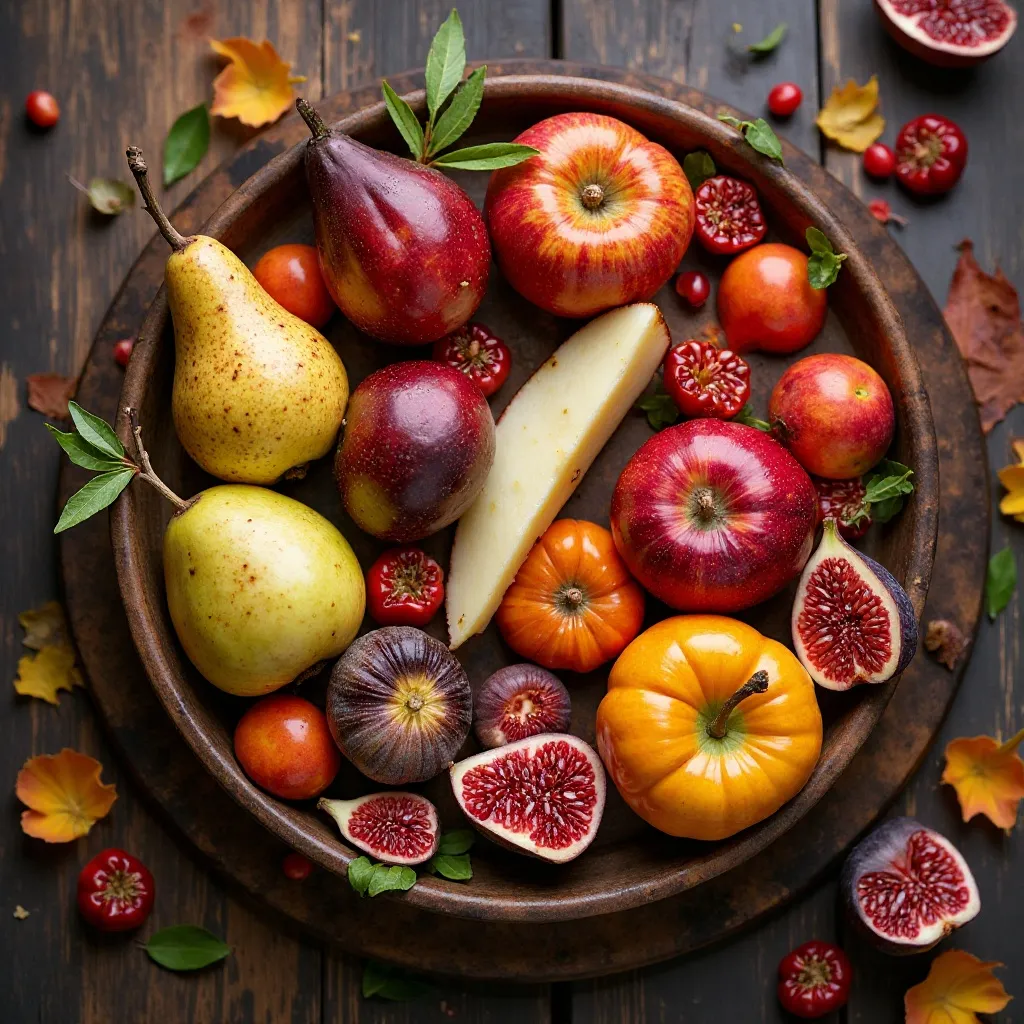
Celebrate the season’s bounty with an emphasis on autumn produce—apples, pears, figs, persimmons, and pomegranate seeds. Pair with aged gouda and triple cream brie.
3. Thanksgiving Dessert Board
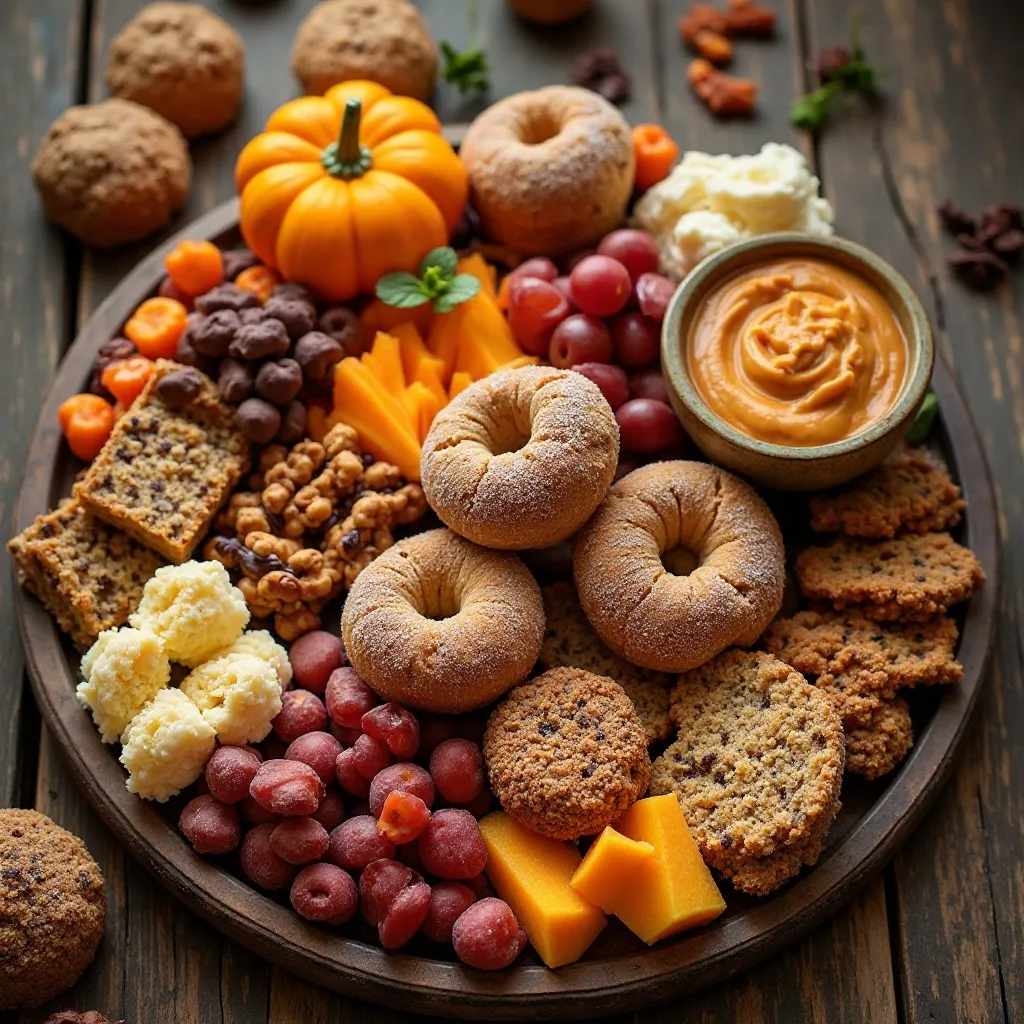
Who says charcuterie must be savory? Create a sweet version with pumpkin pie bites, pecan pie squares, apple cider donuts, caramel dip, chocolate, and seasonal cookies.
4. Vegetarian Thanksgiving Board
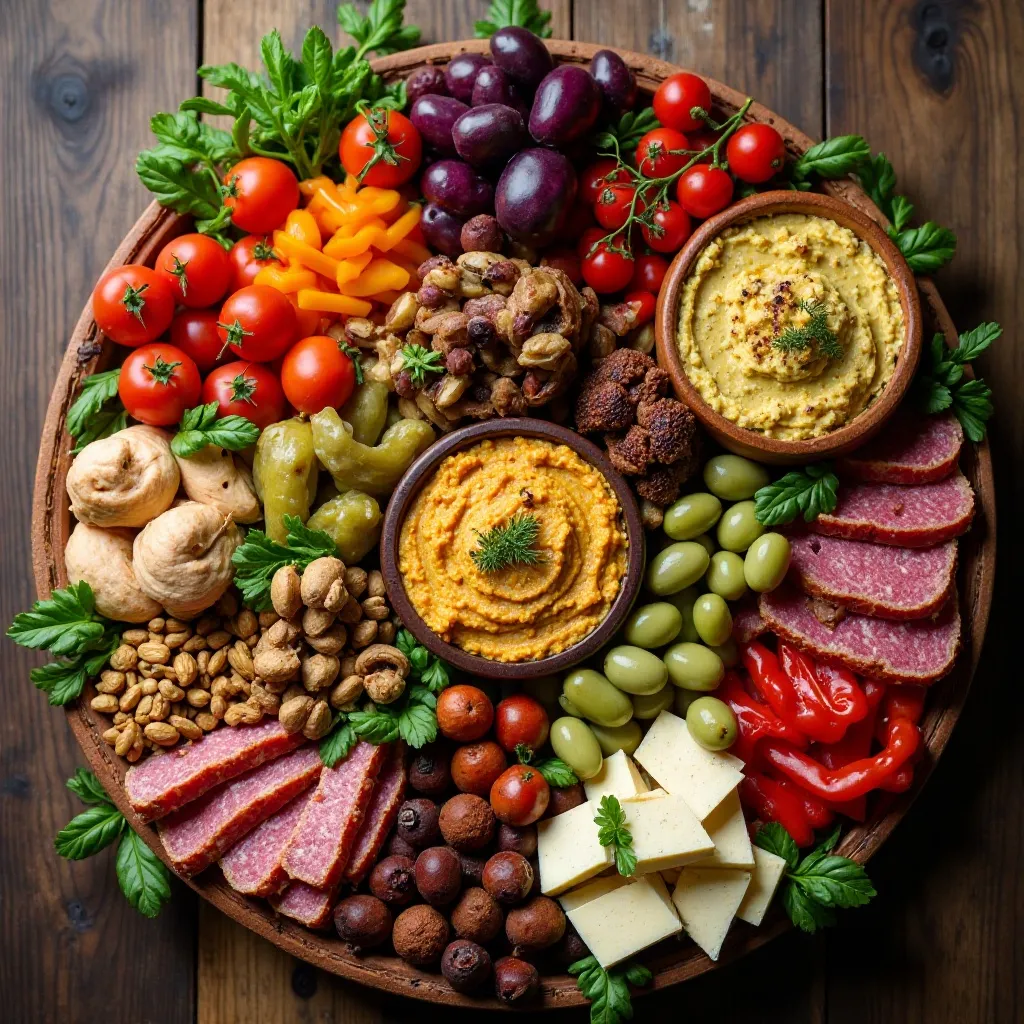
Skip the meats and load up on marinated vegetables, hummus varieties, nuts, cheeses, olives, roasted red peppers, and artichoke hearts. Just as satisfying!
5. Thanksgiving Leftovers Board
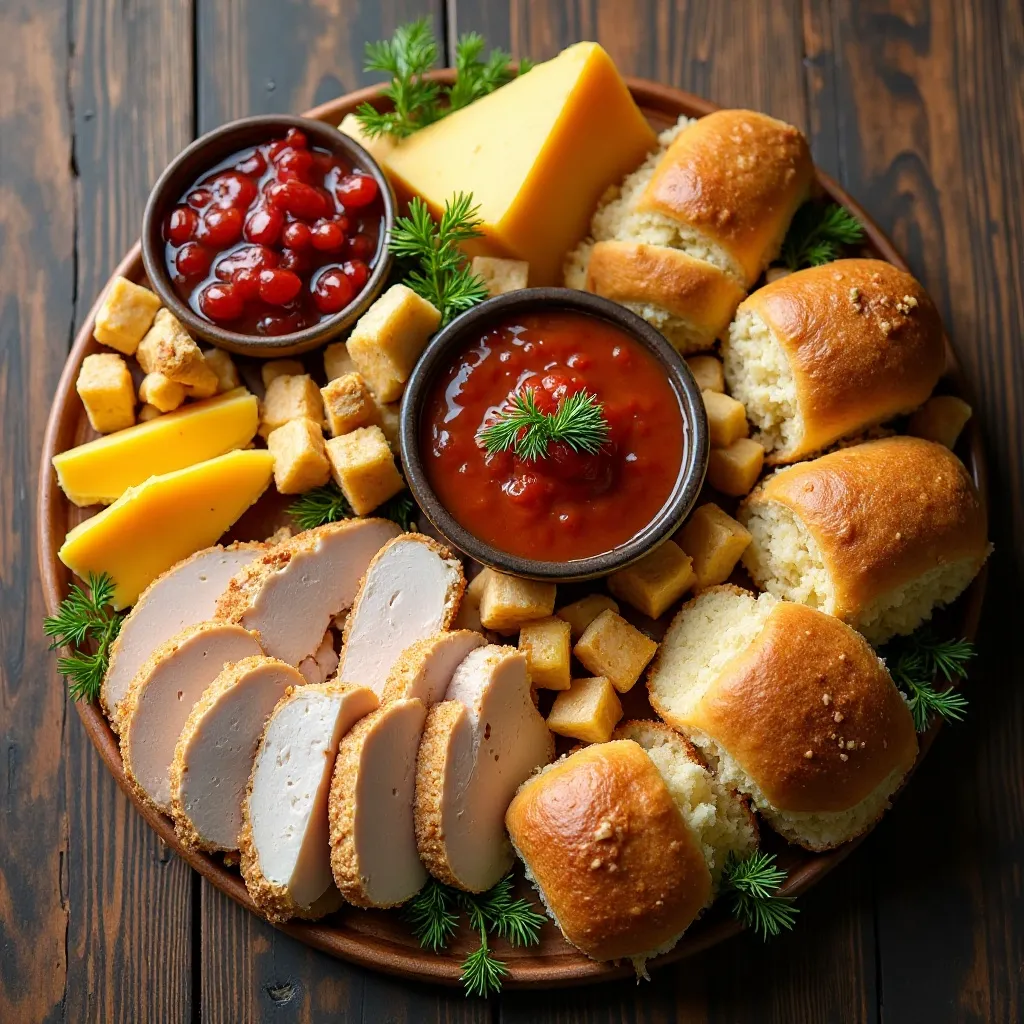
The day after thanksgiving, arrange turkey slices, stuffing cubes, cranberry sauce, dinner rolls, and various cheeses for a genius way to use leftovers.
6. Mini Individual Boards
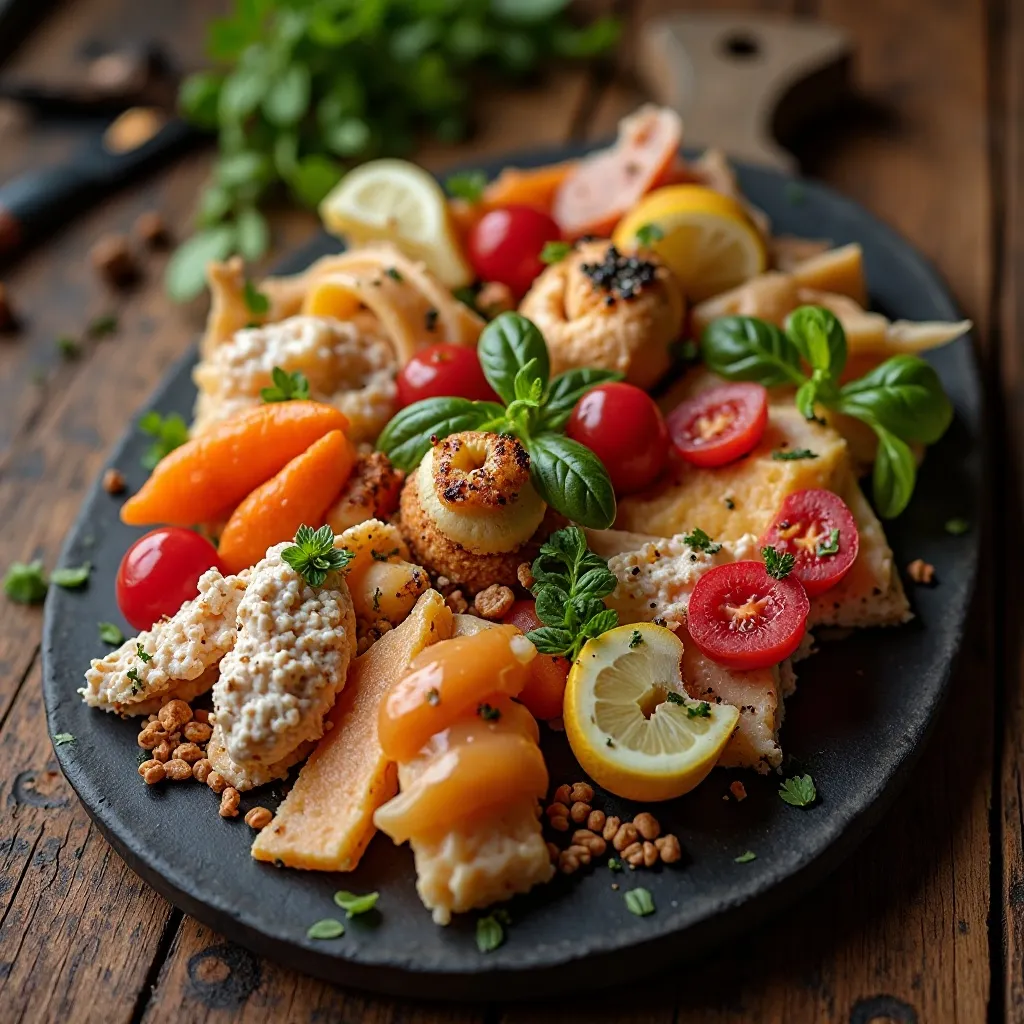
Create small personal boards on appetizer plates for each guest. Perfect for social-distancing gatherings or as elegant starter courses.
7. Thanksgiving Brunch Board
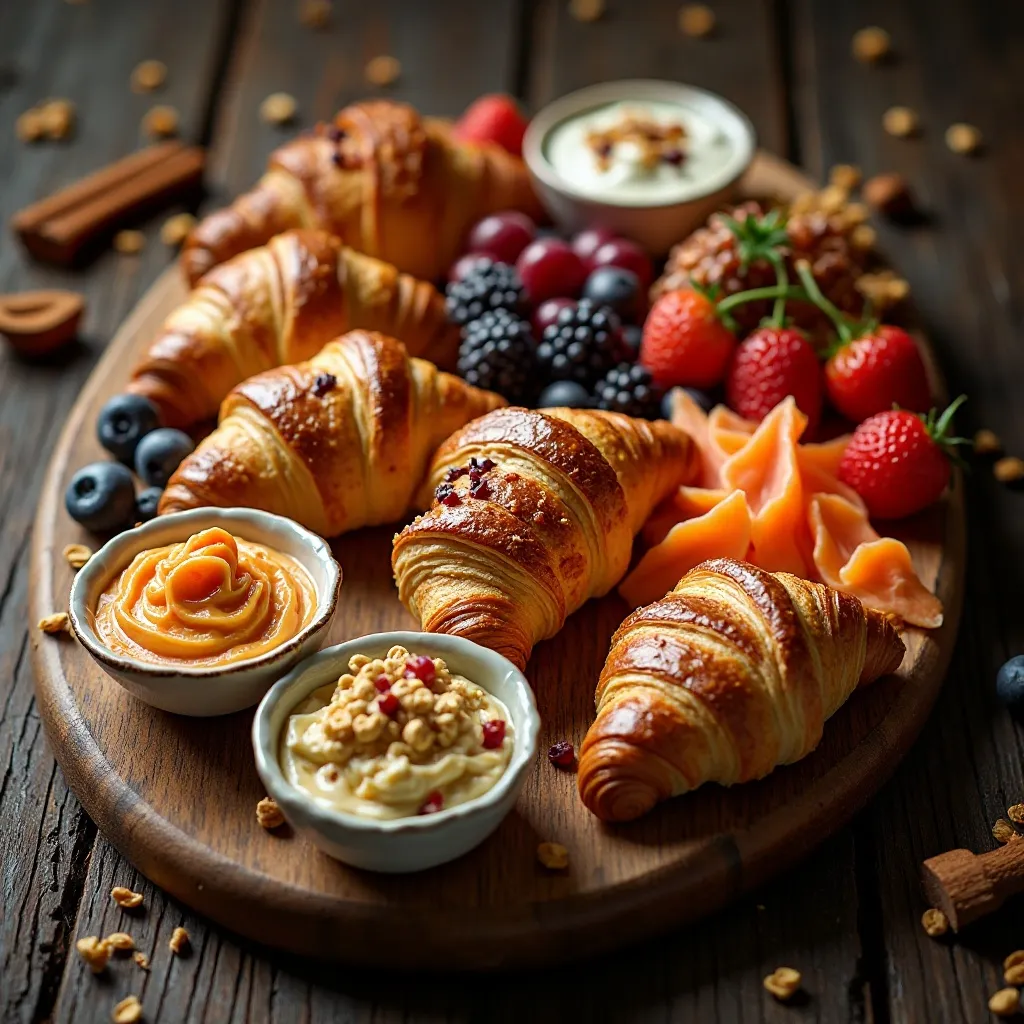
Include breakfast items like mini croissants, cream cheese spreads, smoked salmon, fresh berries, granola, and honey alongside traditional board elements.
8. Southern Thanksgiving Board
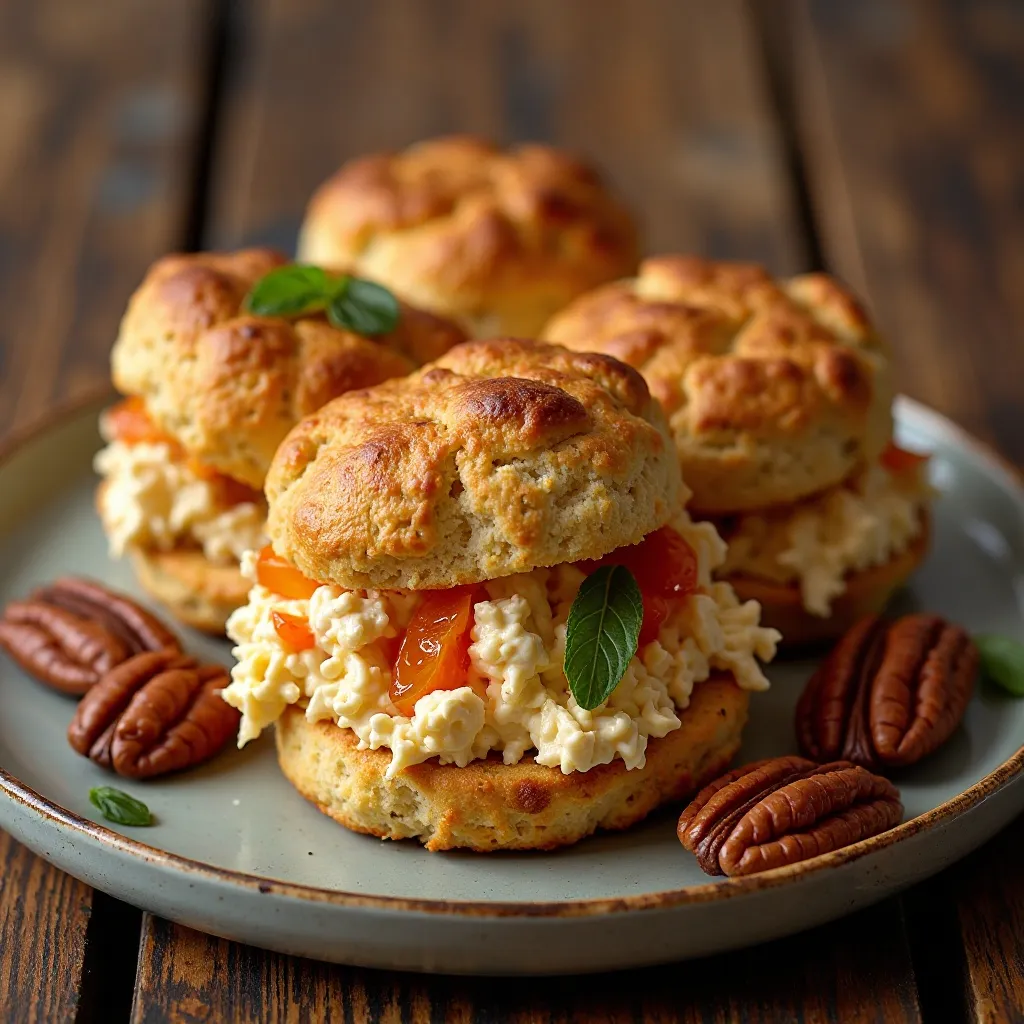
Feature pimento cheese sweet tea pecans, peach preserves, and buttermilk biscuits for a regional twist.
9. Upscale Gourmet Board
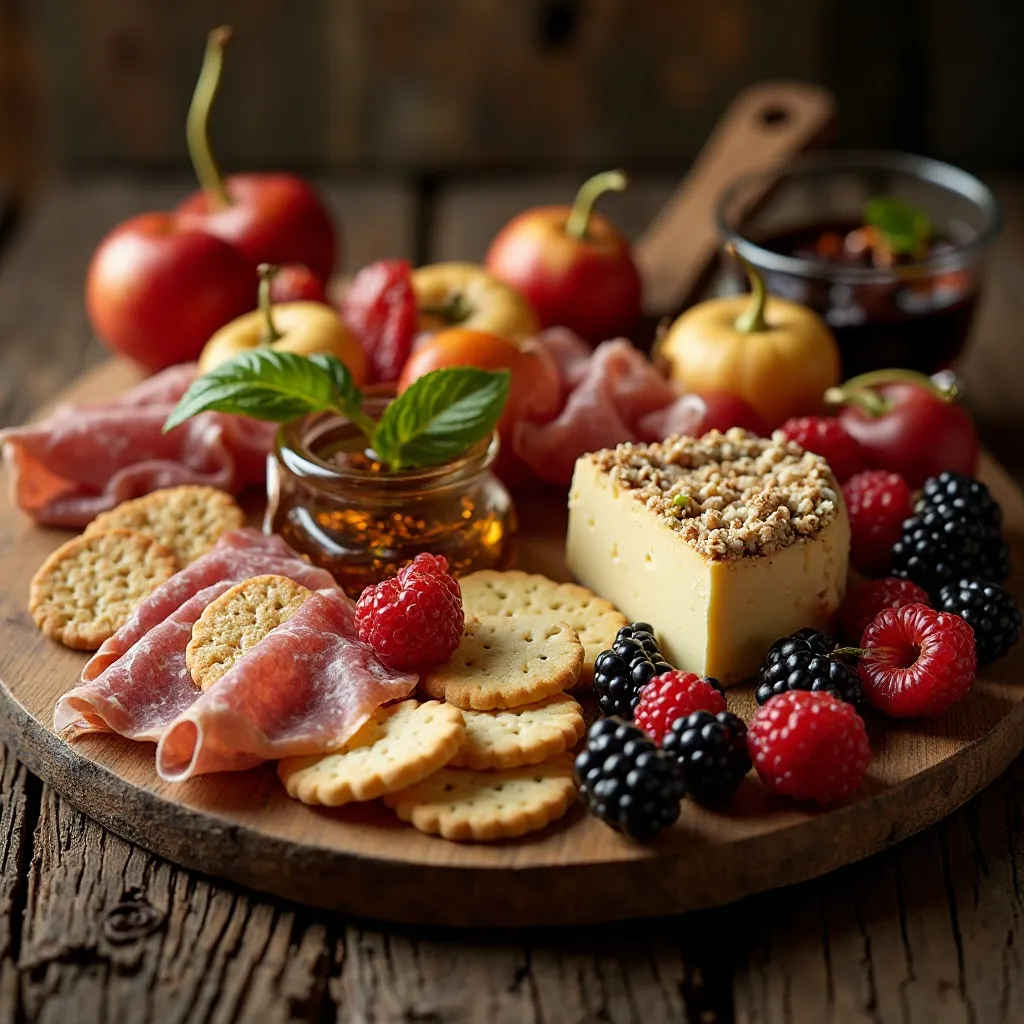
Invest in premium ingredients—truffle cheese, imported prosciutto di parma, aged balsamic, exotic fruits, and artisan crackers for an elevated experience.
10. Kid-Friendly Thanksgiving Board
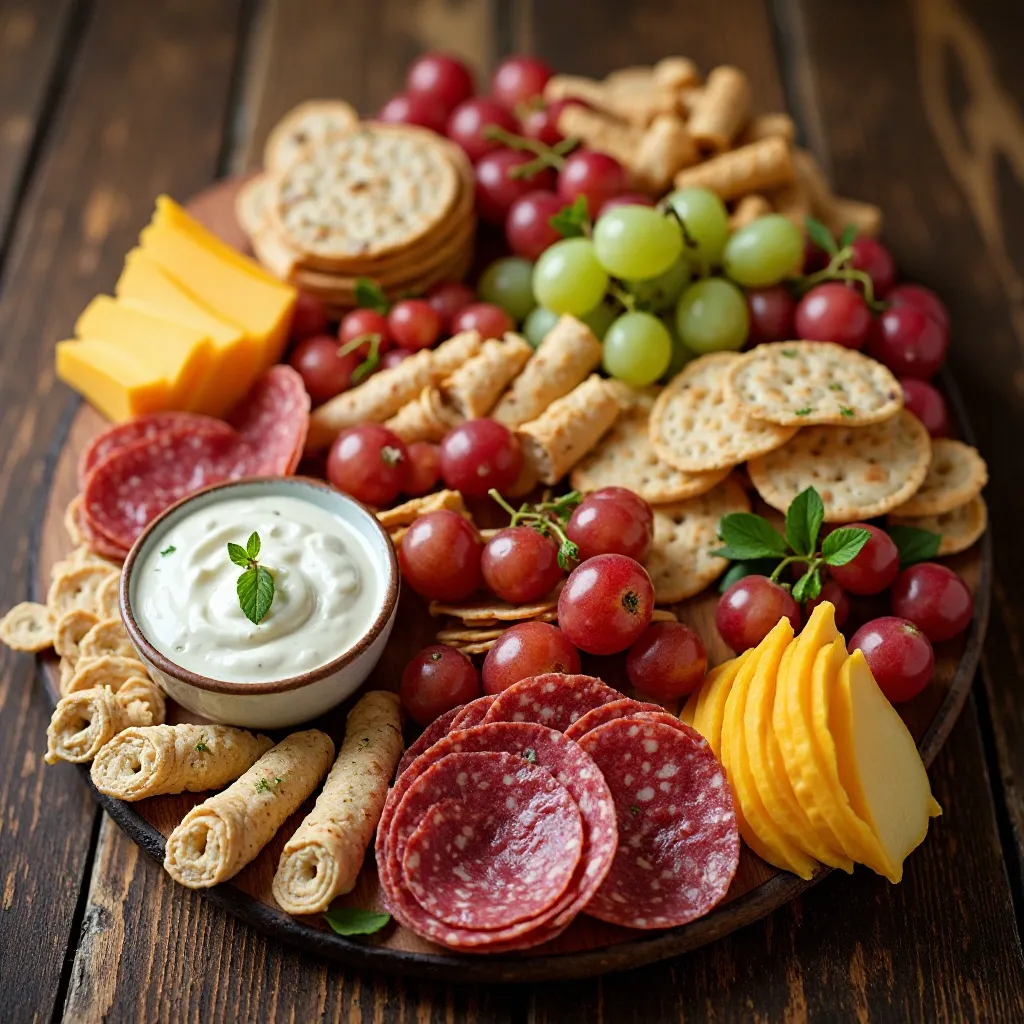
Include mild cheeses, turkey rollups, pretzel crackers, apple slices, grapes, mild salami, and a small bowl of ranch dip to make it appealing for young palates.
What to Serve Thanksgiving Charcuterie Boards With
These versatile boards pair beautifully with various beverages and sides. Serve alongside sparkling cider, cranberry cocktails, red wine (cabernet or pinot noir), or white wine (chardonnay or sauvignon blanc).
For beer lovers, amber ales and pumpkin beers complement autumn flavors perfectly. Hot apple cider with cinnamon sticks makes a cozy non-alcoholic option.
Consider setting out warm spinach artichoke dip or baked brie nearby for guests who want hot appetizers. Fresh vegetable crudités with ranch dip provide lighter options. Soup shooters—like butternut squash or cream of mushroom—in small cups add warmth to your appetizer spread.
If your board serves as the main appetizer before dinner, you might skip additional sides. However, for longer gatherings, having backup crackers and a simple mixed green salad keeps the party going strong.
Top Tips for Perfecting Thanksgiving Charcuterie Boards
Plan Your Color Palette
Thanksgiving boards should showcase autumn’s colors—deep reds, oranges, golden yellows, and rich browns. Choose ingredients with these hues in mind. Red grapes, orange cheddar, dried apricots, and candied pecans create a cohesive seasonal look.
Room Temperature is Everything
Always remove cheeses from the refrigerator 30-45 minutes before serving. Cold cheese has muted flavors and can be hard to slice. Room temperature cheese is creamy, aromatic, and absolutely delicious. This simple step elevates your entire board.
Layer for Dimension
Don’t arrange everything flat. Fold meats, stack crackers at angles, let grapes cascade over edges, and prop up cheese slices. Height and dimension make boards look abundant and inviting rather than flat and sparse.
Odd Numbers are Visually Appealing
When arranging items, use odd numbers (3, 5, 7). Place three cheese wedges instead of four. Arrange five meat roses instead of six. This design principle creates more natural, aesthetically pleasing arrangements.
Label Your Cheeses
Small chalkboard labels or cards help guests identify cheeses, especially if you’re serving unique varieties. People are more likely to try something adventurous if they know what it is. This is especially helpful for blue cheese or strong-flavored options.
Prep Ingredients Ahead
Cut cheeses, wash fruits, and portion nuts the night before. Store everything separately in the fridge, then assemble 1-2 hours before guests arrive. This reduces stress on thanksgiving day when you’re juggling multiple dishes.
Consider Dietary Restrictions
Always ask about allergies and dietary preferences beforehand. Include gluten-free crackers, dairy-free options, and vegetarian proteins. Label items containing nuts or common allergens. Your thoughtfulness will be appreciated.
Don’t Overcrowd
While abundance looks appealing, overcrowding makes it hard for guests to pick items without disturbing the arrangement. Leave strategic gaps and space items so cheese knives can fit comfortably.
Think About Traffic Flow
If your board sits on a dining table, make sure it’s accessible from multiple sides. For buffet tables against walls, place popular items toward the front so guests don’t have to reach awkwardly.
Offer Small Plates and Napkins
This seems obvious but gets forgotten! Stack small appetizer plates and cocktail napkins nearby. Provide small forks or toothpicks for spearing items. These practical touches make grazing easier and cleaner.
Storing and Reheating Tips
Thanksgiving charcuterie boards taste best when served fresh, but leftovers can absolutely be saved with proper storage.
Immediate Storage (Within 2 Hours):
Separate ingredients by type before storing—this is crucial! Don’t store the entire assembled board together as moisture from fruits will make crackers soggy and affect cheese quality.
Cheese Storage:
Wrap cheeses individually in wax paper or parchment paper, then place in airtight containers or resealable bags. Stored properly, most cheeses last 3-5 days in the refrigerator. Soft cheeses like brie should be consumed within 2-3 days, while hard cheeses like cheddar last up to a week.
Meat Storage:
Place cured meats in airtight containers separated by parchment paper to prevent sticking. Consume within 3-4 days. If meats sat at room temperature over 2 hours, discard them to avoid foodborne illness.
Cracker Storage:
Return crackers to their original packaging or store in airtight containers to maintain crispness. They’ll last several weeks if properly sealed.
Fruit Storage:
Store fresh fruits in airtight containers in the refrigerator. Consume within 2-3 days as cut fruit deteriorates quickly. Discard any fruit that looks brown or mushy.
Nuts and Dried Fruits:
These keep well in sealed containers or bags at room temperature for weeks. Refrigeration extends their life even longer.
Spreads and Condiments:
Return jams, honey, and mustards to their original containers and refrigerate. Most last several weeks to months.
Freezing Options:
Hard cheeses can be frozen for up to 3 months, though texture may become crumbly (fine for cooking). Avoid freezing soft cheeses, fresh fruits, or crackers. Cured meats freeze reasonably well for 1-2 months when wrapped tightly.
Reusing Leftovers:
Get creative with leftover board ingredients! Make grilled cheese sandwiches with remaining cheeses. Toss leftover meats and cheeses into omelets or pasta dishes. Use nuts and dried fruits in salads or oatmeal. Blend soft cheeses into mashed potatoes. Nothing needs to go to waste!
Common Mistakes to Avoid
Using Only Cold Ingredients
Serving cheese straight from the fridge is the biggest mistake I see. Cold cheese lacks flavor and can be hard to cut. Plan ahead and let items warm up.
Ignoring Knife Placement
Provide separate knives for different cheeses to avoid flavor mixing. Soft brie needs a different knife than hard cheddar. This small detail shows thoughtfulness.
All Meats Taste the Same
Choose varied meats with different flavors and textures—mild turkey, spicy pepperoni, buttery prosciutto, and tangy salami. Variety keeps things interesting.
Forgetting About Napkins
Greasy fingers from salami and cheese need napkins! This practical element is essential but often overlooked until guests start looking around desperately.
Too Many Bold Flavors
Balance is key. If you include pungent blue cheese, pair it with mild options. Don’t make every element intensely flavored or the board becomes overwhelming.
Not Considering Color Contrast
All beige boards look unappetizing. Include colorful elements like red grapes, green olives, and orange cheddar to make your board pop visually.
Assembling Too Early
While prep can happen ahead, final assembly should occur 1-2 hours before serving. Assembled boards sitting too long result in dried-out cheese edges and wilted garnishes.
Frequently Asked Questions
How much charcuterie do I need per person?
Plan for 2-3 ounces of cheese and 2-3 ounces of meat per person if the board is an appetizer before a meal. For a main course or long party, increase to 4-5 ounces each per person. Always round up—it’s better to have too much than too little!
Can I make a charcuterie board the night before Thanksgiving?
Prep work can definitely happen the night before! Cut cheeses, wash fruits, portion nuts, and organize ingredients in separate containers. However, final assembly should happen the day of, ideally 1-2 hours before serving, to ensure everything looks fresh and appealing.
What’s the best wood for a charcuterie board?
Hardwoods like acacia, bamboo, walnut, and maple work beautifully. They’re durable, naturally antimicrobial, and gorgeous. Avoid softwoods like pine which can harbor bacteria. Whatever you choose, ensure it’s food-safe and properly sealed.
How do I keep apple and pear slices from browning?
Toss cut apples and pears in lemon juice, lime juice, or a mixture of water and citric acid. This slows oxidation significantly. Alternatively, slice these fruits just 15-20 minutes before serving for maximum freshness and minimal browning.
Do I need expensive cheeses to make a good board?
Absolutely not! A mix of one premium cheese (like aged brie) with affordable options (like sharp cheddar and goat cheese) creates an impressive board without breaking the bank. Quality matters more than price—buy the best you can afford and balance expensive items with budget-friendly staples.
Can I make a charcuterie board without meat?
Yes! Vegetarian boards are increasingly popular and equally delicious. Load up on various cheeses, nuts, olives, roasted vegetables, hummus, fruits, and fancy crackers. Marinated artichokes, sun-dried tomatoes, and stuffed peppers add substance that mimics meat’s heartiness.
What’s the ideal size for a thanksgiving charcuterie board serving 12 people?
A board measuring 20-24 inches long works perfectly for 12 people when serving as an appetizer. For larger crowds, consider using two medium boards (16-18 inches each) placed in different areas rather than one massive board that’s difficult to reach.
Should cheese be sliced or left in blocks?
A mix is ideal! Leave brie wheels whole with a cheese knife so guests can cut their own. Pre-slice or cube cheddar and gouda for easy grabbing. This combination looks appealing and accommodates different guest preferences—some love cutting their own, others prefer grab-and-go.
Nutrition Information
| Nutrient | Per Serving (approx.) |
|---|---|
| Serving Size | 1/10 of board |
| Calories | 350-450 |
| Total Fat | 25-30g |
| Saturated Fat | 12-15g |
| Cholesterol | 45-60mg |
| Sodium | 680-850mg |
| Total Carbohydrates | 22-28g |
| Dietary Fiber | 2-4g |
| Sugars | 12-15g |
| Protein | 15-20g |
| Vitamin A | 8-12% DV |
| Vitamin C | 6-10% DV |
| Calcium | 20-25% DV |
| Iron | 6-8% DV |
Nutrition values vary significantly based on specific ingredients chosen and portion sizes. This is an approximate guideline for a balanced thanksgiving charcuterie board.
Final Thoughts
Creating beautiful thanksgiving charcuterie boards doesn’t require culinary school or an enormous budget—just thoughtful ingredient selection and creative arrangement. These boards solve the age-old problem of keeping hungry guests happy while you’re still frantically basting the turkey.
I love how forgiving this recipe is. Forgot an ingredient? Substitute freely. Running behind schedule? These boards are endlessly flexible. Your aunt has dietary restrictions? Easy to accommodate.
The real magic happens when you watch people gather around your creation, chatting and laughing while building their perfect bite. That’s what thanksgiving is all about—bringing people together over good food.
This year, give yourself permission to create something beautiful without stress. Your thanksgiving charcuterie board doesn’t need to be Pinterest-perfect. It just needs to be delicious, welcoming, and made with love.
Now grab your favorite board, raid your pantry, and start creating. Your guests are going to be so impressed, and you’ll be the relaxed host with a glass of wine in hand, watching everyone enjoy your edible masterpiece. Happy thanksgiving! 🍁
